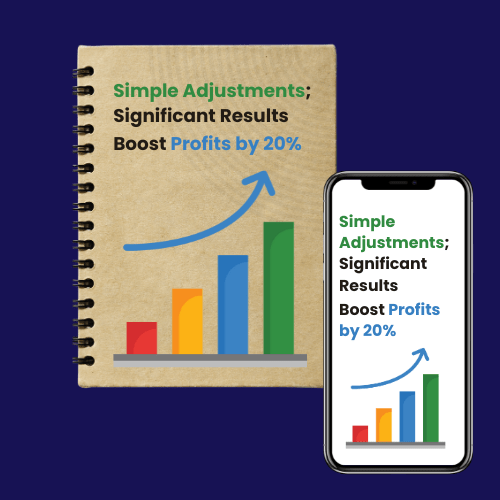Introduction
Imagine cash flow as the heartbeat of your business. When it’s strong and steady, your business thrives—bills get paid on time, employees feel secure, and growth opportunities abound. But when cash flow is weak, stress levels rise, payments get delayed, and your business risks running into financial trouble.
Many businesses, even profitable ones, struggle because they fail to manage cash flow effectively. The key to staying financially healthy isn’t just about making more sales—it’s about managing your cash wisely. Let’s break down the step-by-step action plan to ensure your business maintains a healthy cash flow and avoids financial pitfalls.
Steps to Improve Cash Flow
1. Create a Cash Flow Forecast: Predict the Future
If you don’t know what’s coming, how can you prepare? A cash flow forecast allows you to anticipate shortages before they happen and take proactive measures to avoid financial struggles.
How to do it:
- Use a simple spreadsheet or financial software (like QuickBooks or Xero) to track your income and expenses for the next three to six months.
- Factor in seasonal fluctuations—some businesses see a dip in revenue at certain times of the year.
- Identify upcoming large expenses, such as rent, payroll, or inventory purchases, and plan accordingly.
✅ Bonus Tip: Update your forecast regularly. Cash flow isn’t a one-time report—it should be an ongoing tool that helps you make informed decisions.
2. Improve Accounts Receivable: Get Paid Faster
Having revenue on paper means nothing if it isn’t in your bank account. The longer clients take to pay you, the more it strains your cash flow.
How to speed up payments:
- Invoice immediately. Don’t wait until the end of the month—send invoices as soon as a service or product is delivered.
- Follow up aggressively. Many businesses hesitate to remind clients about payments. Don’t be shy—send polite but firm reminders before invoices are overdue.
- Offer early payment incentives. Give clients a small discount for paying within 7-10 days instead of 30-60 days.
- Set penalties for late payments. Charge interest or late fees to encourage clients to pay on time.
✅ Bonus Tip: Switch to automated invoicing software that sends reminders and tracks payment status, saving you valuable time.
3. Optimize Expenses: Cut the Fat, Not the Muscle
Cutting costs doesn’t mean sacrificing quality or growth—it means eliminating waste and reallocating resources wisely.
Where to start:
- Audit your subscriptions. Many businesses pay for unused software, memberships, or services. Cancel anything that isn’t essential.
- Renegotiate contracts. Suppliers, landlords, and service providers often have room for negotiation—ask for better terms or discounts.
- Stop low-ROI activities. If a marketing channel, event sponsorship, or service isn’t bringing a good return, cut it and focus on high-impact areas.
- Improve operational efficiency. Automate manual tasks, reduce energy waste, and optimize inventory management.
✅ Bonus Tip: Don’t cut expenses blindly—analyze impact first. Cutting customer service might save money short-term but can hurt customer retention and revenue long-term.
4. Negotiate Better Payment Terms: Stretch Your Outflows
One of the easiest ways to maintain liquidity is by adjusting when and how you pay your expenses.
How to do it:
- Extend supplier payment terms. If your suppliers require payment in 30 days, try negotiating for 45 or 60 days.
- Stagger large payments. Instead of making lump-sum payments, see if you can pay in smaller, scheduled installments.
- Take advantage of credit lines. Some suppliers offer interest-free payment plans—use these wisely to manage cash flow without high-interest loans.
✅ Bonus Tip: Maintain strong supplier relationships—negotiating better terms is easier when you’ve built trust and have a history of timely payments.
Case Study: How a Struggling Bakery Transformed Its Cash Flow
A small family-owned bakery was on the brink of shutting down due to severe cash flow issues. Despite having steady sales, they were constantly short on cash and struggling to pay suppliers and employees.
Here’s what they did to turn things around in six months:
- Created a cash flow forecast to anticipate seasonal dips.
- Streamlined invoicing—introduced digital payment options and offered discounts for early payments.
- Cut unnecessary costs—eliminated underperforming menu items and reduced utility expenses.
- Renegotiated supplier contracts to extend payment terms and improve bulk pricing.
🚀 The Result: Within six months, they stabilized cash flow, paid off debts, and reinvested in growth—all without taking on additional loans!
Managing cash flow isn’t just about earning more—it’s about spending smarter and planning ahead. Businesses that proactively manage cash flow don’t just survive—they thrive, grow, and have the flexibility to invest in new opportunities.
💡 Final Takeaways: ✔ Forecast cash flow to avoid future shortages.
✔ Get paid faster by improving accounts receivable processes.
✔ Reduce unnecessary expenses without cutting essential resources.
✔ Negotiate better payment terms to maintain liquidity.
Start implementing these strategies today, and watch as your cash flow strengthens, stress levels drop, and your business thrives! 🚀


